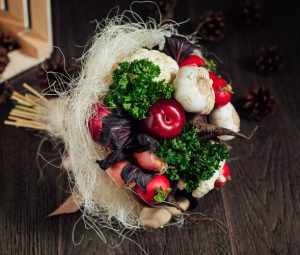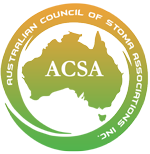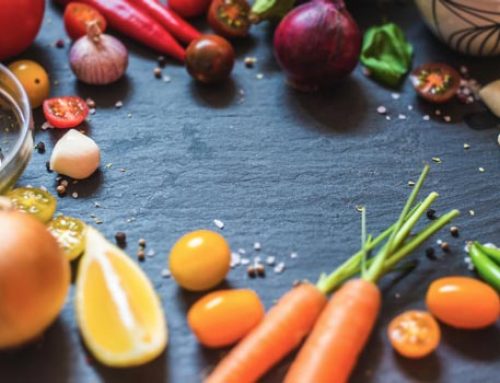
[fusion_dropcap]T[/fusion_dropcap]he summer months are here and, whilst it is a great time of year with lots of fun, frivolity and relaxation, there are also some important considerations for Ostomates in staying healthy during this time. And one of them is to remain hydrated during the warmer weather. Sue, a lovely sixty-nine-year-old lady, contacted me in November 2013 seeking dietary assistance, primarily for fatigue. She had been an Ostomate since 2004 as a result of Ulcerative Colitis, and initially experienced no ssues. She was very well and enjoyed a full and varied diet. In the latter part of 2005 Sue had her leostomy reversed and a J-Pouch formed. However, due to a series of complications over a period of nine months, it became necessary to have the J-Pouch removed and a permanent ileostomy was formed in 2006. This resulted in the loss of the portion of ileum that had been used to form the J-Pouch. At the time of contacting me Sue was experiencing excessive fatigue that she could not shake, a need to constantly graze else she would feel odd, weak and unwell out of the blue, and with diarrhoea possibly from a food that had disagreed with her recently. Her output was a liquid paste and she was emptying her bag approximately eight to ten times a day. In her own words, she felt wretched”. Throughout most of her life Sue had had a thin stature, but had gained some weight more recently, possibly due to her constant grazing. She always had the feeling of being a bit hungry. Her hair had also become more lacklustre in recent years and her eyes felt scratchy. She was not on any medications but her doctor had recently recommended Vitamin D and an iron supplement because blood tests had shown she was low in these. She had also self-prescribed B vitamins to help with her energy, magnesium to assist with cramps, and fish oil. Sue’s diet consisted of fresh, organic food as much as possible but, because she was grazing erratically rather than eating regular meals, she was not eating a great quantity of food.
There was also an emphasis on carbohydrate foods such as bread, cereal, crackers, rice, vegetable soup and salad, and not a lot of protein foods such as meat, fish, chicken, eggs or dairy. She felt she could only digest meat well when she was relaxed, e.g. when out for dinner with friends, and so tended to avoid these foods when feeling anxious as they felt too heavy in her stomach. Sue consumed strong coffee each day and used it as a ‘pick-me-up’ as he got quite a kick out of it, but her tolerance of alcohol was low as she felt a little tipsy after one or wo glasses of wine at night. She was also sensitive to strong smells such as perfumes and paint fumes and felt she was becoming more allergic over the last few years. Her water intake was also generally low for her stature. My initial dietary recommendations for Sue included consuming more hydrating beverages, as water isneeded to produce energy in the body and dehydration can ontribute to fatigue. I felt that her fatigue may also have been due to fluctuating blood sugar levels and recommended that she consume a protein food with each meal or snack to balance her blood sugar levels throughout the day. I also wrote a letter to her GP requesting blood tests to help determine if specific nutrient deficiencies were contributing to her fatigue as well. I then provided Sue with some recipes to support my recommendations, and information on the Glycaemic Index (GI) of carbohydrate foods and their effect on blood sugar balance. I also referred her to the Hydration for Ostomates article that was printed in the December 2013 issue of the Ostomy Australia Journal. When discussing her progress in the follow-up consultation, Sue reported that she had endeavoured to consume more protein, but was struggling with this as it was still not sitting well in her stomach. Many people find that, as they age, their ability to digest protein foods, especially meats such as steak and chops etc, is reduced and so they start to avoid them, which can have health implications. For this reason I generally tend to recommend more digestible protein foods such as scrambled eggs, omelettes, fish and slow cooked meats such as lamb shank soup in these circumstances. Sue had made a casserole of slow-cooked beef and found this to be quite good with no issues regarding digestion. She had also started making a beef tea
 To assist her with digestion of protein foods and to help her enjoy a fuller diet, I recommended Sue sip some apple cider vinegar mixed in water before meals, and continue with slow-cooked recipes. Apple cider vinegar is not appropriate for everyone but was suitable in this particular instance. In our next consultation Sue reported feeling a bit better. She felt the extra protein in her diet was helping and she was not experiencing the ‘weak and woozy’ feeling as often as previously. She was sipping the apple cider vinegar before meals and the food was sitting more comfortably in her stomach. Fatigue was still an issue though. When Sue’s blood test results came through, I was interested to see some anomalies considering her dietary intake and surgical history. Her GP had stated that everything was fine, but her test results showed some nutrients were higher than I would expect in her case. Based on these test results I adjusted her supplement regime which included ceasing the B vitamins. I have now referred her for a genetic test in order to determine if a genetic abnormality is affecting the expression of genes and enzymes that affect how her body stores and utilises certain nutrients. In an earlier consultation Sue had queried whether it was appropriate to consume salt with her food or even take salt tablets considering her stomal output and fatigue. Generally, it is recommended that ileostomates in particular consume more salt in their diet to replace stomal losses, however I wanted to see the results of her blood test before making any recommendations. The test results indicated her electrolyte balance was normal and her blood pressure was low so I advised her that it was suitable for her to add salt to her diet and consume a salt tablet occasionally if necessary. In our most recent consultation Sue reported that she is focussing more on low GI foods and finding benefit in this. She is not experiencing as much hunger and feels these foods fill her up more. It can be tricky for many ostomates to consume low GI foods because the fibre content is higher and they may increase output. However, Sue is enjoying barley and spelt cereal for breakfast, some dried fruit, yoghurt, sourdough bread, nuts (such as peanuts, walnuts and cashews) and corn-chips. She is making a point of chewing all her food very well (as she has always done) and is only eating a small quantity at a time, and has not experienced any issues. As advised, Sue has also ceased the B vitamin complex she had self-prescribed, and feels her energy is returning as a result. Her eyes did not feel as scratchy as previously and she looks better. She feels sharper in her mind and is not experiencing any attacks of hunger, which she now realises were quite debilitating. Her stoma output has reduced as well, which may be due to the soluble fibre in the low GI diet slowing down transit time and increasing nutrient absorption. Sue attributes a lot of her improvement to the increased protein in her diet and the lower GI foods filling her up more. Looking back, Sue says she can now see that she was consuming too much coffee and her diet had become unbalanced. She recently made the comment to me that she had accepted her symptoms for years in the belief that they were inevitable, when in fact they can be corrected. On another note, just prior to Christmas Sue reported a skin rash under her ostomy appliance with small red bumps that was causing her some concern. Upon questioning she admitted she had not seen a Stomal Therapy Nurse (STN) since being discharged from hospital many years previously. I advised her that it is good practice to see aSTN at least once a year for a ‘check-up’ to ensure that her appliance is fitting correctly and is still the best option for her. Next time I spoke with her she reported that she had indeed seen a STN who had recommended an additional product to protect her skin and her skin rash had resolved as a result. She was very happy. I am very pleased with Sue’s progress and the work she has put into changing her dietary intake and habits. I look forward to continuing to work with her as necessary to ensure continued improvement.
To assist her with digestion of protein foods and to help her enjoy a fuller diet, I recommended Sue sip some apple cider vinegar mixed in water before meals, and continue with slow-cooked recipes. Apple cider vinegar is not appropriate for everyone but was suitable in this particular instance. In our next consultation Sue reported feeling a bit better. She felt the extra protein in her diet was helping and she was not experiencing the ‘weak and woozy’ feeling as often as previously. She was sipping the apple cider vinegar before meals and the food was sitting more comfortably in her stomach. Fatigue was still an issue though. When Sue’s blood test results came through, I was interested to see some anomalies considering her dietary intake and surgical history. Her GP had stated that everything was fine, but her test results showed some nutrients were higher than I would expect in her case. Based on these test results I adjusted her supplement regime which included ceasing the B vitamins. I have now referred her for a genetic test in order to determine if a genetic abnormality is affecting the expression of genes and enzymes that affect how her body stores and utilises certain nutrients. In an earlier consultation Sue had queried whether it was appropriate to consume salt with her food or even take salt tablets considering her stomal output and fatigue. Generally, it is recommended that ileostomates in particular consume more salt in their diet to replace stomal losses, however I wanted to see the results of her blood test before making any recommendations. The test results indicated her electrolyte balance was normal and her blood pressure was low so I advised her that it was suitable for her to add salt to her diet and consume a salt tablet occasionally if necessary. In our most recent consultation Sue reported that she is focussing more on low GI foods and finding benefit in this. She is not experiencing as much hunger and feels these foods fill her up more. It can be tricky for many ostomates to consume low GI foods because the fibre content is higher and they may increase output. However, Sue is enjoying barley and spelt cereal for breakfast, some dried fruit, yoghurt, sourdough bread, nuts (such as peanuts, walnuts and cashews) and corn-chips. She is making a point of chewing all her food very well (as she has always done) and is only eating a small quantity at a time, and has not experienced any issues. As advised, Sue has also ceased the B vitamin complex she had self-prescribed, and feels her energy is returning as a result. Her eyes did not feel as scratchy as previously and she looks better. She feels sharper in her mind and is not experiencing any attacks of hunger, which she now realises were quite debilitating. Her stoma output has reduced as well, which may be due to the soluble fibre in the low GI diet slowing down transit time and increasing nutrient absorption. Sue attributes a lot of her improvement to the increased protein in her diet and the lower GI foods filling her up more. Looking back, Sue says she can now see that she was consuming too much coffee and her diet had become unbalanced. She recently made the comment to me that she had accepted her symptoms for years in the belief that they were inevitable, when in fact they can be corrected. On another note, just prior to Christmas Sue reported a skin rash under her ostomy appliance with small red bumps that was causing her some concern. Upon questioning she admitted she had not seen a Stomal Therapy Nurse (STN) since being discharged from hospital many years previously. I advised her that it is good practice to see aSTN at least once a year for a ‘check-up’ to ensure that her appliance is fitting correctly and is still the best option for her. Next time I spoke with her she reported that she had indeed seen a STN who had recommended an additional product to protect her skin and her skin rash had resolved as a result. She was very happy. I am very pleased with Sue’s progress and the work she has put into changing her dietary intake and habits. I look forward to continuing to work with her as necessary to ensure continued improvement.
Wishing you good health and happy days,
Margaret
This article contains specific dietary advice tailored to the personal circumstances and medical/surgical history of the individual. It is not intended as general dietary advice.
“Source: (Ostomy Australia Magazine) Margaret Allan is a qualified Nutritionist who advises Ostomates and the general public on diet and health-related matters. Margaret is based in Melbourne and is available for clinical and telephone consultations by appointment. Margaret can be contacted via email on [email protected]”

